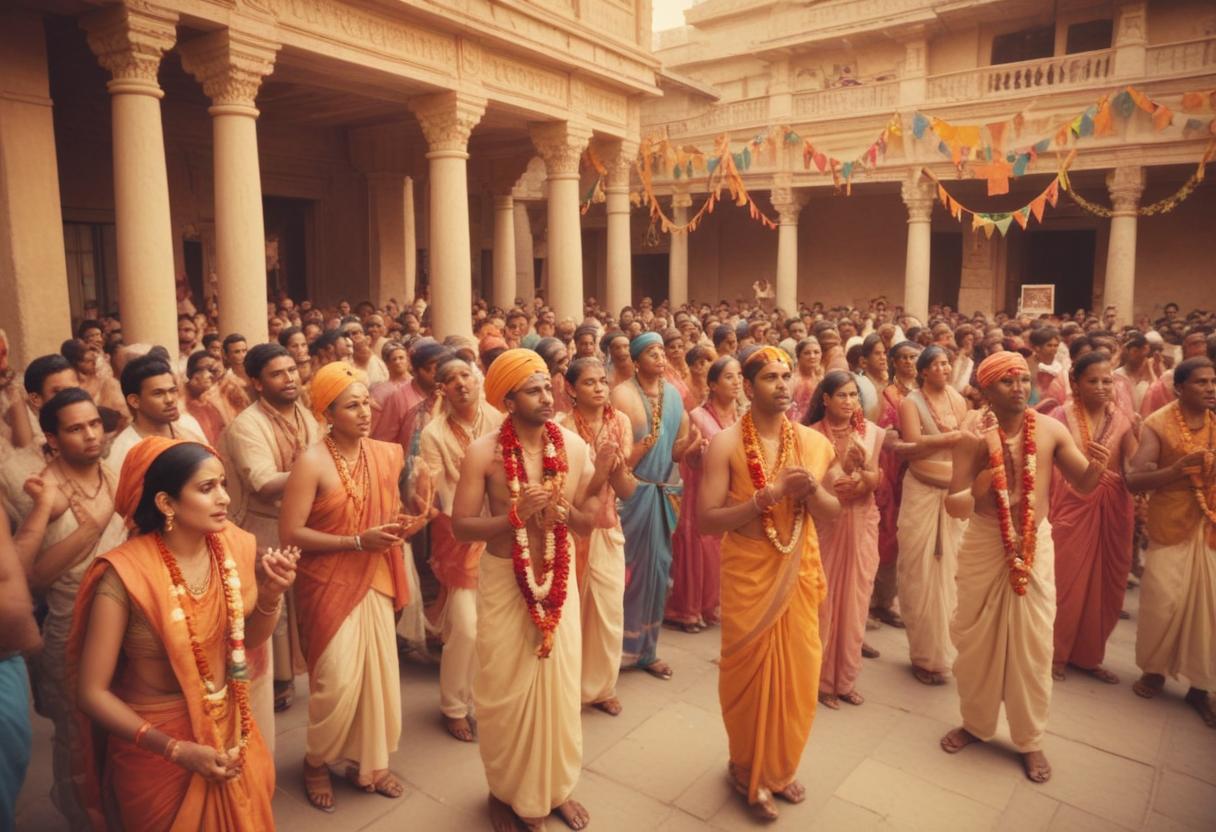
The importance of fasting during Janamashtami is considered to be a symbolic representation of the tortuous life of Devaki and Vasudeva. People abstain from food in order to have a cleansed self and spirit in order to accept Krishna as their god and invite him to their homes. The fast is most commonly broken at midnight, as this is believed to be the time that Krishna was born, with an offering to the deity. This practice is to depict the belief which the devotees have and victory of good force over the bad force which happened after birth of Krishna over Kamsa, the tyrant.
What can be eaten after the fast?
Kheer (Rice Pudding)
To start making kheer, one has to wash the Basmati rice and then soak it in water that should be warm or hot for about half an hour. While that is doing so, warm milk in a heavy bottomed pan until it bubbles and boils gently. When the milk is boiling add the rice that has been soaked. Let this simmer on a low heat for some time, stirring in between until the rice is soft and the milk has thickened. Then, put sugar and stir well until it melts down in the mixture. Add cardamom powder for more enhancement of the taste, you may also add chopped almonds, cashews, raisins and a pinch of saffron for some richness. Stir for a few more minutes, then take out from the heat source. It is best to let the kheer cool slightly before serving; it can be served warm, hot, or cold.
Shrikhand
To prepare Shrikhand, begin by draining yogurt through a muslin cloth or a sieve with a fine mesh in order to get thick yogurt and eliminate as much water as possible. Scoop out the strained yogurt into a bowl and beat until it is smooth and creamy. Slowly sift the powdered sugar into the yogurt and continue to whisk until the water content of the sugar has dissolved and the glaze is glossy and smooth. Stir in cardamom powder for flavour and if desired, a pinch of saffron soaked in warm milk may be added to give it a pleasant fragrance and colouring. If possible, mix well and chill the Shrikhand in a refrigerator for several hours. And it should be served chilled, topped with nuts like almonds or pistachios.
Sabudana Khichdi
To prepare Sabudana Khichdi, start by washing sabudana (tapioca pearls) and soak in water for some time or overnight until the sabudana pearls absorb the water completely. Gradually rinse under running water and drain off the water, and keep the sabudana aside for soaking. Take some ghee or oil in a pan and heat it, and then put cumin seeds in it. After the cumin seeds crackle, add the chopped green chillies and curry leaves and fry for a minute. After that, put boiled and cuted potatoes into the pan and fry till the potatoes seem to be a little golden. Put the soaked sabudana into the pan as well as the crushed roasted peanuts and mix it. Add to the mixture a little salt as well as a pinch of sugar and mix all the ingredients thoroughly. Continue cooking on low heat for a few minutes until sabudana changes its color to transparent and becomes soft. Lastly, final touches that give a refreshing texture should be put on the dish; prepare some fresh lemon juice and sprinkle it on the Khichdi, also add chopped coriander leaves for aesthetic purposes. Serve hot.
Basundi
Before making Basundi, pour milk in a wide and heavy bottom pan and place it on the heat source. Decrease the heat to the lowest and let the milk heat, when it starts to bubble stir it with a spoon to avoid sticking on the base. With time, the quantity of milk will decrease resulting in the formation of a layer of cream on the top. Carry on scraping the sides of the steep pan and then fold the cream back into the milk. Sugar should be added to the mixture when the milk has been simmered, and stirred in until dissolved. Finally, garnish this Basundi with cardamom powder and a few strands of saffron which has been soaked in warm milk. Add a few more minutes of cooking time until the mixture becomes thicker like a cream. Take off from the heat and allow it to cool. Basundi should be served cold or at an ambient temperature especially with chopped almonds or walnuts on-top.
Besan Laddoo
To make Besan Laddoo start with roasting the besan (gram flour) in ghee on a low flame in a heavy bottomed pan. Stir it continuously to avoid burning the besan and so that you achieve a uniform browning on the besan. Go on roasting until the besan becomes golden brown and emits a nutty scent. In this final stage, the roasted besan with powdered sugar and cardamom powder is also added to it. Remove the mixture from heat and let it cool for a few minutes with the heat turned off. But after the preparation is still warm enough to be molded but not too hot, spoon the mixture into small balls and form round laddoos. If preferred you may sprinkle some chopped nuts or raisins over them. Allow the laddoos to cool well before transferring it into an airtight jar for the flavours to settle well.







